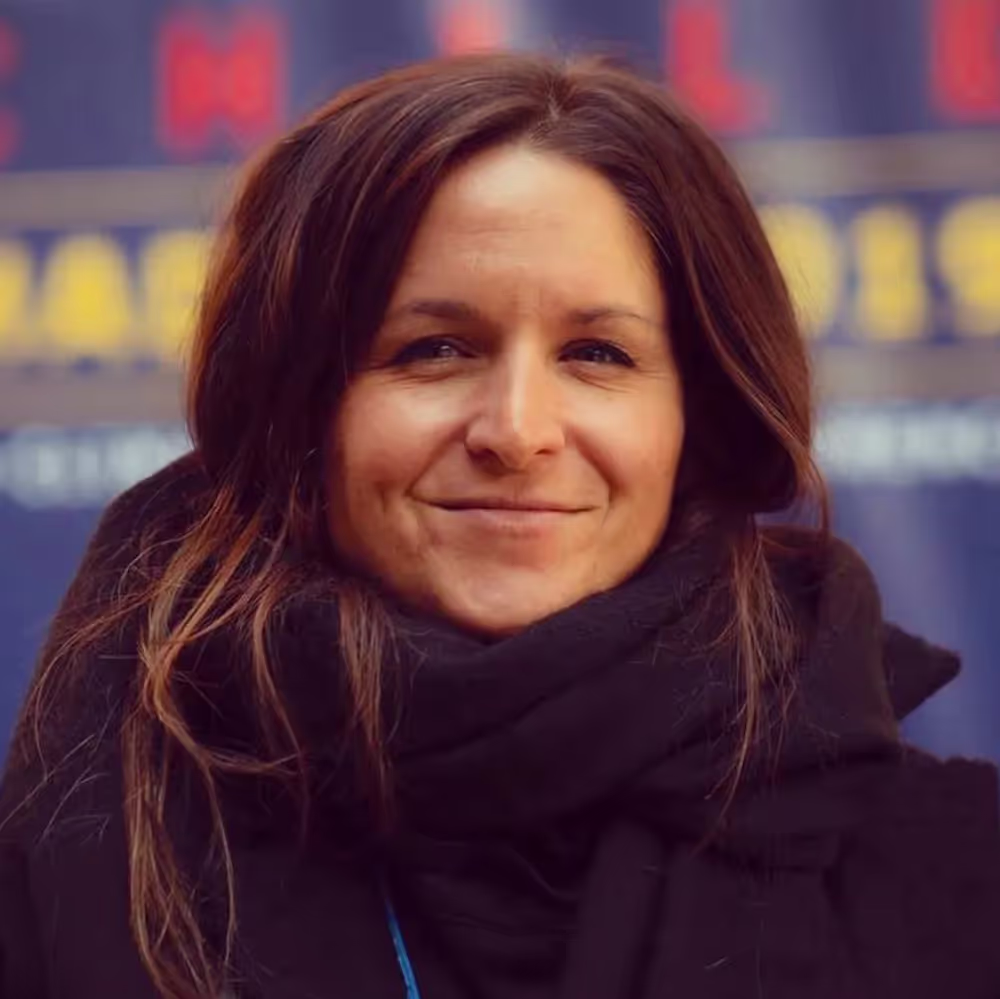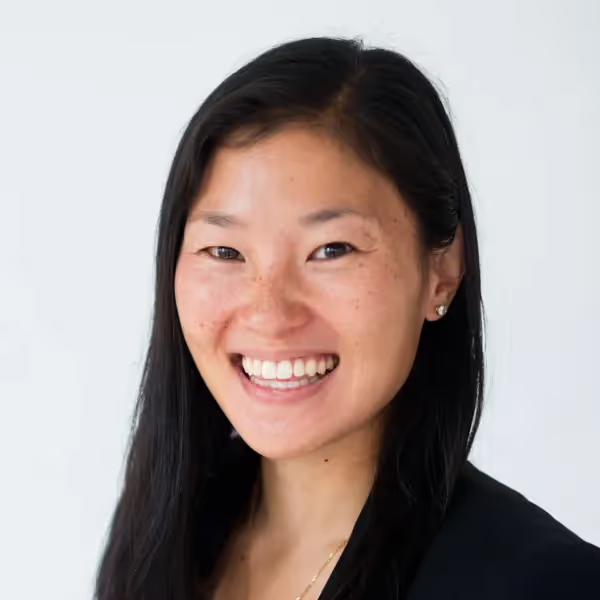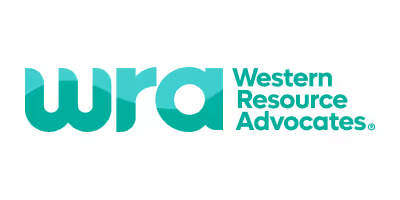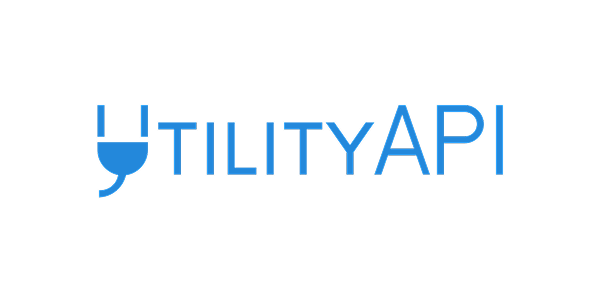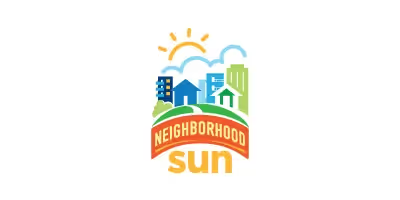
Our 1% for the Planet Beneficiaries for 2023

Despite their vital work to prevent and mitigate a climate crisis and other environmental threats, environmental nonprofits receive just 2% of charitable dollars annually in the US. Which is why two years ago, DG+Design joined the 1% for the Planet community to help support nonprofits that are fighting pressing environmental issues around the world through the annual donation of 1% of our gross sales. Any organization can join the community, which helps vet nonprofits, certify donations, advise businesses on giving strategies, and amplify the impact of the 1% network.
While the DG+ team’s contributions might be relatively small when compared to some of the larger community members, we still follow a formal process to our giving. Our approach is relatively simple. Each of our full-time employees chooses a recipient nonprofit organization to receive funding. Then, our total donations are split equally among these nonprofits.
There’s an old environmental advocacy adage that says the best way to entice action is through exposure to the place that needs protection. People protect what they love. This is certainly the case for the DG+ team. This year’s nonprofits, while varied in approach, all shared a common theme – the geographic regions in which they do their work all hold personal significance to the team member who chose them. Here are 2022’s beneficiaries:
Capital Roots works to reduce the impact of poor nutrition on public health in New York’s Capital Region by organizing community gardens, providing healthy food access, offering nutritional and horticultural education for all ages and coordinating urban greening programs in Albany, Rensselaer, Schenectady and southern Saratoga Counties.


This year it was important to me to be able to select a hyperlocal organization in my area. I opted for Capital Roots due to my familiarity with their community-based initiatives. I deeply appreciate their dedication to promoting food justice and providing easy access to fresh, healthy, and locally-sourced food for all.
FLOW’s mission is to ensure the waters of the Great Lakes Basin are healthy, public, and protected for all.


I once read a columnist refer to herself as a ‘Granddaughter of the Great Lakes' while waxing poetic about her connection to the largest freshwater resource in the world. And I’ve never identified with something more.
Growing up on the shores of Lake Michigan, I am, and forever will be, a fierce advocate for the protection of the Great Lakes. Beyond just my personal attachment to those waters, they are an irreplaceable natural resource, accounting for 85% of the US' fresh water supply and 20% of the entire planet's fresh surface water supply. And they are under a perpetual stream of threats from one private interest group to another. Which is why, without hesitation, I chose for my portion of our donation to go to FLOW.
Based in my hometown of Traverse City, Michigan, FLOW is an organization near and dear to my heart. They leverage the rule of law and the assertion that these waters are considered a public trust in order to fight greedy and corrupt corporations like Nestle and Enbridge. I particularly appreciate that they use their education and understanding of law (they were founded and are run by environmental lawyers) to proactively engage people who have been excluded from and discriminated against in key water policy decisions. They also advocate for equitable and sustainable water policies that eliminate discriminatory practices and differential community access.
As they put it, ‘Water is our common heritage. The Great Lakes watershed is a core part of that heritage. Its waters belong to all of us and are owned by no one.
Friends of the San Juans aims to preserve the beauty, character, and wildness of the San Juan Islands in Washington State. Friends primary goals are to foster wild and healthy shorelines, promote thriving and sustainable communities, conserve forests, farmlands, freshwater and prairie habitats, and ensure the health of the marine ecosystem. Friends uses science to inform decisions that conserve the county’s environment and economy. Friends works locally and throughout the region using innovative public-private partnerships, applied science, legal advocacy, and community-based initiatives to protect the land, water and sea for those of us here today and for future generations.


My family has a place on Lopez Island, so I grew up playing outside there – spending hours climbing trees, peeking under barnacle-freckled rocks for scuttling crabs on the beaches, dissecting flowers, and eating wild blackberries. It’s where I truly fell in love with nature.
Over the last couple of decades, the San Juans have become a much more popular tourist destination, which means more ferry traffic on the water and more humans impacting the delicate coastal and prairie habitats. Friends of San Juans was formed by people like me who fell in love with the Islands and want to ensure that its beauty is preserved for generations to come.

Little Village Environmental Justice Organization (LVEJO)
LVEJO was founded by public school parents in the mid-90s in an effort to change their children’s school administration from moving ahead with renovations that would expose their children to dangerous particulate matter. Since then, the organization has played an integral role in shutting down local coal plants, remediating superfund sites, and establishing bus routes in Little Village and beyond.


I chose Little Village Environmental Justice Organization because I wanted my 1% for the Planet donation to have a local impact and they’re a group that has played a large role in the advocacy for and change in environmental and community health in the Little Village neighborhood in Chicago, IL.
I admire LVEJO’s holistic approach to environmental justice. They organize for cleaner air, cleaner water, accessible public transit, and more, which all comes together to create equitable communities.
To aid in the protection, preservation, and restoration of the natural environment of the nation's major rivers and their watersheds.


I chose Living Lands & Waters for my donation because I grew up in the Midwest, surrounded by lakes and rivers, specifically the Mississippi. I have seen first hand the pollution in these bodies of freshwater and the suffering of the habitat involved. I hate knowing surrounding wildlife is negatively affected by human waste. Cleaning up these rivers and lakes is a nasty job and I applaud Living Lands & Waters for using their resources to make a true difference.
Sempervirens Fund initially set out in 1900 to protect six square miles of old-growth redwoods in what is now Big Basin State Park (California’s first State Park). Since their founding they have protected more than 36,000 acres of redwoods in the Santa Cruz Mountains. They have a multifaceted approach that incorporates public parks, private land, and sustainably managed forests to maintain a healthy redwood ecosystem.


The redwood forests of Santa Cruz have captivated me since I moved there to attend UCSC in 2007. I grew up in Del Mar, a small San Diego beach town where forests aren’t really a thing. Sure, there are the meticulously planted palm trees that line the boulevards and sporadic clusters of the critically endangered Torrey Pine, but the landscape of my childhood was more coastal-chaparral-chic than anything resembling a forest.
I distinctly remember the wonder I felt the first time I arrived in Santa Cruz and found myself immersed in a sea of towering redwoods. Today I am still inspired and deeply humbled by the ancient skyscrapers that define one of my favorite places on the planet.
Sempervirens Fund does incredible and important work to protect these natural wonders, some of which are well over 1,000 years old. The organization has seen the magnificent Santa Cruz redwoods through periods of severe ecological damage and it continues to pioneer innovative models of land management. Their dedication to these awe-inspiring arboreal specimens ensure that they will thrive and be enjoyed for generations to come.
The Shenandoah National Park Trust invests in activities that help protect, enhance, and preserve Shenandoah National Park. As the official philanthropic partner of the Shenandoah National Park, they raise money to support specific programs, such as protecting wildlife, advancing research, and education.


Having grown up in the Shenandoah Valley, my love for the outdoors began in and around Shenandoah National Park. Many of my first hikes and camping trips happened in the park, including summer camp visits and school field trips. My family would sometimes go for drives along the famous 105-mile long Skyline Drive and I was able to discover even more of the park while in college at UVa. From the rocky summit of Old Rag to the Appalachian Trail, and a number of swimming holes with waterfalls, the park has much to offer and I would even say that it is underrated by those who haven’t spent much time there.
There’s a trend across our team of choosing donations this year for environmental organizations that have a specific geographic focus, and my choice certainly aligns with the others. I think it’s important to support nonprofits of all sizes that are fighting different fronts to preserve and protect the Earth, especially in the face of climate change.
SoundWaters is a nonprofit organization located in Stamford, Connecticut, that is dedicated to protecting Long Island Sound and the surrounding watershed. The organization's mission is to inspire people of all ages to respect, protect, and preserve the Sound and its ecosystem through education, science, and research programs.


Our contribution will not only serve to protect Long Island Sound but also will help promote environmental education and stewardship in their community.
SoundWaters is committed to providing educational opportunities for people of all ages to learn about the importance of preserving the Sound and its ecosystem. The organization offers a variety of programs for students, teachers, and community members that are designed to engage people in hands-on learning experiences that promote environmental stewardship.
SoundWaters conducts scientific research and monitoring programs that help identify and address environmental threats to the Sound and its ecosystem. This research is critical to informing policy decisions and management practices that protect the Sound's ecological health.
Capital Roots works to reduce the impact of poor nutrition on public health in New York’s Capital Region by organizing community gardens, providing healthy food access, offering nutritional and horticultural education for all ages and coordinating urban greening programs in Albany, Rensselaer, Schenectady and southern Saratoga Counties.


This year it was important to me to be able to select a hyperlocal organization in my area. I opted for Capital Roots due to my familiarity with their community-based initiatives. I deeply appreciate their dedication to promoting food justice and providing easy access to fresh, healthy, and locally-sourced food for all.
FLOW’s mission is to ensure the waters of the Great Lakes Basin are healthy, public, and protected for all.


I once read a columnist refer to herself as a ‘Granddaughter of the Great Lakes' while waxing poetic about her connection to the largest freshwater resource in the world. And I’ve never identified with something more.
Growing up on the shores of Lake Michigan, I am, and forever will be, a fierce advocate for the protection of the Great Lakes. Beyond just my personal attachment to those waters, they are an irreplaceable natural resource, accounting for 85% of the US' fresh water supply and 20% of the entire planet's fresh surface water supply. And they are under a perpetual stream of threats from one private interest group to another. Which is why, without hesitation, I chose for my portion of our donation to go to FLOW.
Based in my hometown of Traverse City, Michigan, FLOW is an organization near and dear to my heart. They leverage the rule of law and the assertion that these waters are considered a public trust in order to fight greedy and corrupt corporations like Nestle and Enbridge. I particularly appreciate that they use their education and understanding of law (they were founded and are run by environmental lawyers) to proactively engage people who have been excluded from and discriminated against in key water policy decisions. They also advocate for equitable and sustainable water policies that eliminate discriminatory practices and differential community access.
As they put it, ‘Water is our common heritage. The Great Lakes watershed is a core part of that heritage. Its waters belong to all of us and are owned by no one.
Friends of the San Juans aims to preserve the beauty, character, and wildness of the San Juan Islands in Washington State. Friends primary goals are to foster wild and healthy shorelines, promote thriving and sustainable communities, conserve forests, farmlands, freshwater and prairie habitats, and ensure the health of the marine ecosystem. Friends uses science to inform decisions that conserve the county’s environment and economy.Friends works locally and throughout the region using innovative public-private partnerships, applied science, legal advocacy, and community-based initiatives to protect the land, water and sea for those of us here today and for future generations.


My family has a place on Lopez Island, so I grew up playing outside there – spending hours climbing trees, peeking under barnacle-freckled rocks for scuttling crabs on the beaches, dissecting flowers, and eating wild blackberries. It’s where I truly fell in love with nature.
Over the last couple of decades, the San Juans have become a much more popular tourist destination, which means more ferry traffic on the water and more humans impacting the delicate coastal and prairie habitats. Friends of San Juans was formed by people like me who fell in love with the Islands and want to ensure that its beauty is preserved for generations to come.
LVEJO was founded by public school parents in the mid-90s in an effort to change their children’s school administration from moving ahead with renovations that would expose their children to dangerous particulate matter. Since then, the organization has played an integral role in shutting down local coal plants, remediating superfund sites, and establishing bus routes in Little Village and beyond.


I chose Little Village Environmental Justice Organization because I wanted my 1% for the Planet donation to have a local impact and they’re a group that has played a large role in the advocacy for and change in environmental and community health in the Little Village neighborhood in Chicago, IL.
I admire LVEJO’s holistic approach to environmental justice. They organize for cleaner air, cleaner water, accessible public transit, and more, which all comes together to create equitable communities.
To aid in the protection, preservation, and restoration of the natural environment of the nation's major rivers and their watersheds


I chose Living Lands & Waters for my donation because I grew up in the Midwest, surrounded by lakes and rivers, specifically the Mississippi. I have seen first hand the pollution in these bodies of freshwater and the suffering of the habitat involved. I hate knowing surrounding wildlife is negatively affected by human waste. Cleaning up these rivers and lakes is a nasty job and I applaud Living Lands & Waters for using their resources to make a true difference.
Sempervirens Fund initially set out in 1900 to protect six square miles of old-growth redwoods in what is now Big Basin State Park (California’s first State Park). Since their founding they have protected more than 36,000 acres of redwoods in the Santa Cruz Mountains. They have a multifaceted approach that incorporates public parks, private land, and sustainably managed forests to maintain a healthy redwood ecosystem.


The redwood forests of Santa Cruz have captivated me since I moved there to attend UCSC in 2007. I grew up in Del Mar, a small San Diego beach town where forests aren’t really a thing. Sure, there are the meticulously planted palm trees that line the boulevards and sporadic clusters of the critically endangered Torrey Pine, but the landscape of my childhood was more coastal-chaparral-chic than anything resembling a forest.
I distinctly remember the wonder I felt the first time I arrived in Santa Cruz and found myself immersed in a sea of towering redwoods. Today I am still inspired and deeply humbled by the ancient skyscrapers that define one of my favorite places on the planet.
Sempervirens Fund does incredible and important work to protect these natural wonders, some of which are well over 1,000 years old. The organization has seen the magnificent Santa Cruz redwoods through periods of severe ecological damage and it continues to pioneer innovative models of land management. Their dedication to these awe-inspiring arboreal specimens ensure that they will thrive and be enjoyed for generations to come.
The Shenandoah National Park Trust invests in activities that help protect, enhance, and preserve Shenandoah National Park. As the official philanthropic partner of the Shenandoah National Park, they raise money to support specific programs, such as protecting wildlife, advancing research, and education.


Having grown up in the Shenandoah Valley, my love for the outdoors began in and around Shenandoah National Park. Many of my first hikes and camping trips happened in the park, including summer camp visits and school field trips. My family would sometimes go for drives along the famous 105-mile long Skyline Drive and I was able to discover even more of the park while in college at UVa. From the rocky summit of Old Rag to the Appalachian Trail, and a number of swimming holes with waterfalls, the park has much to offer and I would even say that it is underrated by those who haven’t spent much time there.
There’s a trend across our team of choosing donations this year for environmental organizations that have a specific geographic focus, and my choice certainly aligns with the others. I think it’s important to support nonprofits of all sizes that are fighting different fronts to preserve and protect the Earth, especially in the face of climate change.
SoundWaters is a nonprofit organization located in Stamford, Connecticut, that is dedicated to protecting Long Island Sound and the surrounding watershed. The organization's mission is to inspire people of all ages to respect, protect, and preserve the Sound and its ecosystem through education, science, and research programs.


Our contribution will not only serve to protect Long Island Sound but also will help promote environmental education and stewardship in their community.
SoundWaters is committed to providing educational opportunities for people of all ages to learn about the importance of preserving the Sound and its ecosystem. The organization offers a variety of programs for students, teachers, and community members that are designed to engage people in hands-on learning experiences that promote environmental stewardship.
SoundWaters conducts scientific research and monitoring programs that help identify and address environmental threats to the Sound and its ecosystem. This research is critical to informing policy decisions and management practices that protect the Sound's ecological health.
If your business is interested in learning more about 1% for the Planet and how to get involved, you know of an environmental organization who could benefit from such a network, or if you want to make a one-time donation, we encourage you to contact them today.
Let's discuss your next project.
Are you looking for marketing, communications, creative, or research help? Simply fill out this form, and we'll be in touch!


